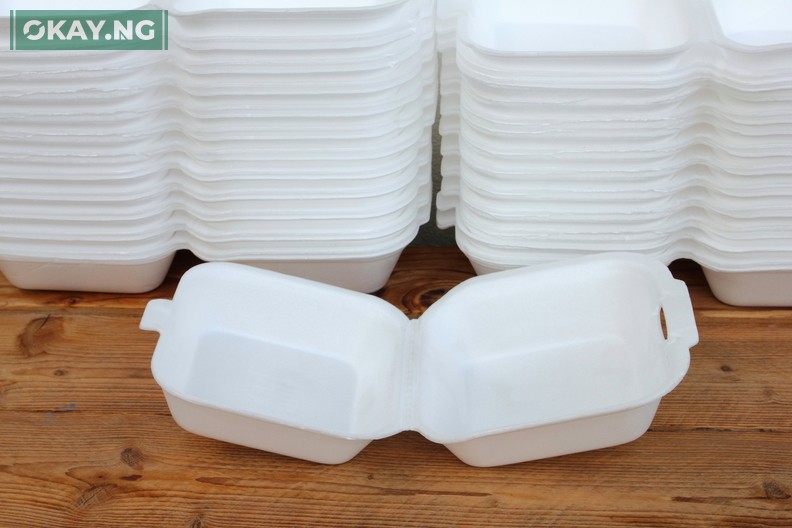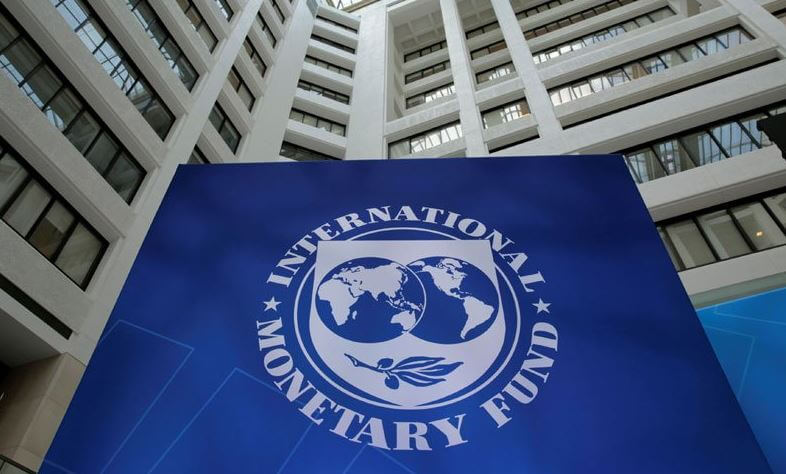The Lagos State Government has announced that it will begin full enforcement of the ban on the usage and distribution of Styrofoam food containers all over the state on Monday, February 19, 2024.
Styrofoam, also known as polystyrene, is a raw material used to manufacture disposable plates, cups, and trays used in eateries, fast-food joints, and catering services.
The state government had earlier banned the use and distribution of Styrofoam and other single-use plastics across the state in January, citing the environmental and health hazards they pose.
However, many stakeholders have expressed their dissatisfaction with the ban, claiming that it would adversely affect their businesses and livelihoods. Some have also resorted to selling the items in covert ways or using nylon bags as alternatives.
The state Ministry of the Environment and Water Resources disclosed the commencement of the enforcement in a series of tweets on its X handle on Saturday night.
The Commissioner for Environment and Water Resources, Mr. Wahab, said that the enforcement would start across all markets on Monday and officers from LAGESC/KAI, Environmental Health Officials, LAWMA Police, and the Ministry would go after all those having the styrofoam in their shops, stores, or outlets and confiscate them.
He added that the government was determined to encourage viable options for Styrofoam containers across the metropolis, as Styrofoam usage had caused enough damage to the health of the residents and the state of the environment for so many years.
He also appealed to the market leaders and traders to ensure that cleanliness and sanitation remain their priority, as some markets were recently closed due to their unsanitary conditions.
He further urged the traders to desist from selling on the railway lines and the roads, as the government would soon commission the Red Rail line that would operate from dusk till dawn.
Why is Styrofoam banned in Lagos?
Styrofoam is banned in Lagos because it is a non-biodegradable material that does not decompose easily. It takes hundreds of years for Styrofoam to break down in landfills, where it occupies a large amount of space and releases harmful chemicals into the soil and groundwater.
Styrofoam is also a major source of litter and pollution in the state, as it is often discarded carelessly on the streets, drains, and waterways. It clogs the drainage systems, causes flooding, and poses a threat to the aquatic life.
Styrofoam is also harmful to human health, as it can leach toxic substances such as styrene and benzene into the food and drinks that are stored or served in it. These substances can cause various health problems such as cancer, respiratory disorders, nervous system damage, and hormonal disruption.
What are the alternatives to Styrofoam?
The alternatives to Styrofoam are biodegradable and eco-friendly materials that can be used to make food containers and packaging. Some of these materials are:
- Paper: Paper is a natural and renewable material that can be easily recycled and composted. Paper plates, cups, and boxes are widely available and affordable. They are also lightweight and durable.
- Bamboo: Bamboo is a fast-growing and sustainable plant that can be used to make plates, bowls, cutlery, and straws. Bamboo products are biodegradable, compostable, and antibacterial. They are also stylish and elegant.
- Palm leaf: Palm leaf is another plant-based material that can be used to make plates, bowls, and trays. Palm leaf products are made from fallen leaves that are collected, washed, and pressed into shapes. They are biodegradable, compostable, and microwave-safe. They are also sturdy and heat-resistant.
- Cornstarch: Cornstarch is a starch extracted from corn that can be used to make plastic-like materials that are biodegradable and compostable. Cornstarch products are similar to Styrofoam in appearance and texture, but they are much more environmentally friendly. They can be used to make cups, trays, and clamshells.
- Bagasse: Bagasse is a fibrous residue left after the extraction of juice from sugarcane. It can be used to make paper-like materials that are biodegradable and compostable. Bagasse products are suitable for hot and cold food and drinks, as they are grease-resistant and moisture-resistant. They can be used to make plates, bowls, cups, and containers.
What are the benefits of using alternatives to Styrofoam?
The benefits of using alternatives to Styrofoam are:
- They reduce the amount of waste and pollution generated by single-use plastics.
- They conserve the natural resources and energy that are used to produce Styrofoam.
- They protect the environment and the wildlife from the harmful effects of Styrofoam.
- They promote the health and safety of the consumers and the workers who handle Styrofoam.
- They support the local and green economy by creating jobs and income for the producers and sellers of alternative products.
- They enhance the aesthetic and ethical appeal of the food and drinks that are served or sold in them.
How can I comply with the ban on Styrofoam?
If you are a consumer, you can comply with the ban on Styrofoam by:
- Avoiding buying or using food and drinks that are packaged or served in Styrofoam containers.
- Bringing your own reusable or biodegradable containers, cups, and cutlery when you order or buy food and drinks from eateries or vendors.
- Educating yourself and others about the dangers of Styrofoam and the benefits of alternatives.
- Supporting and patronizing the businesses that use alternatives to Styrofoam.
If you are a business owner, you can comply with the ban on Styrofoam by:
- Disposing of any remaining stock of Styrofoam products in a responsible manner.
- Switching to biodegradable and eco-friendly products for your food and drink packaging and serving needs.
- Informing and educating your customers and staff about the ban and the alternatives.
- Seeking and sourcing the best and most affordable suppliers of alternative products in the market.
- Adapting and innovating your business model and practices to suit the new environmental regulations and standards.












